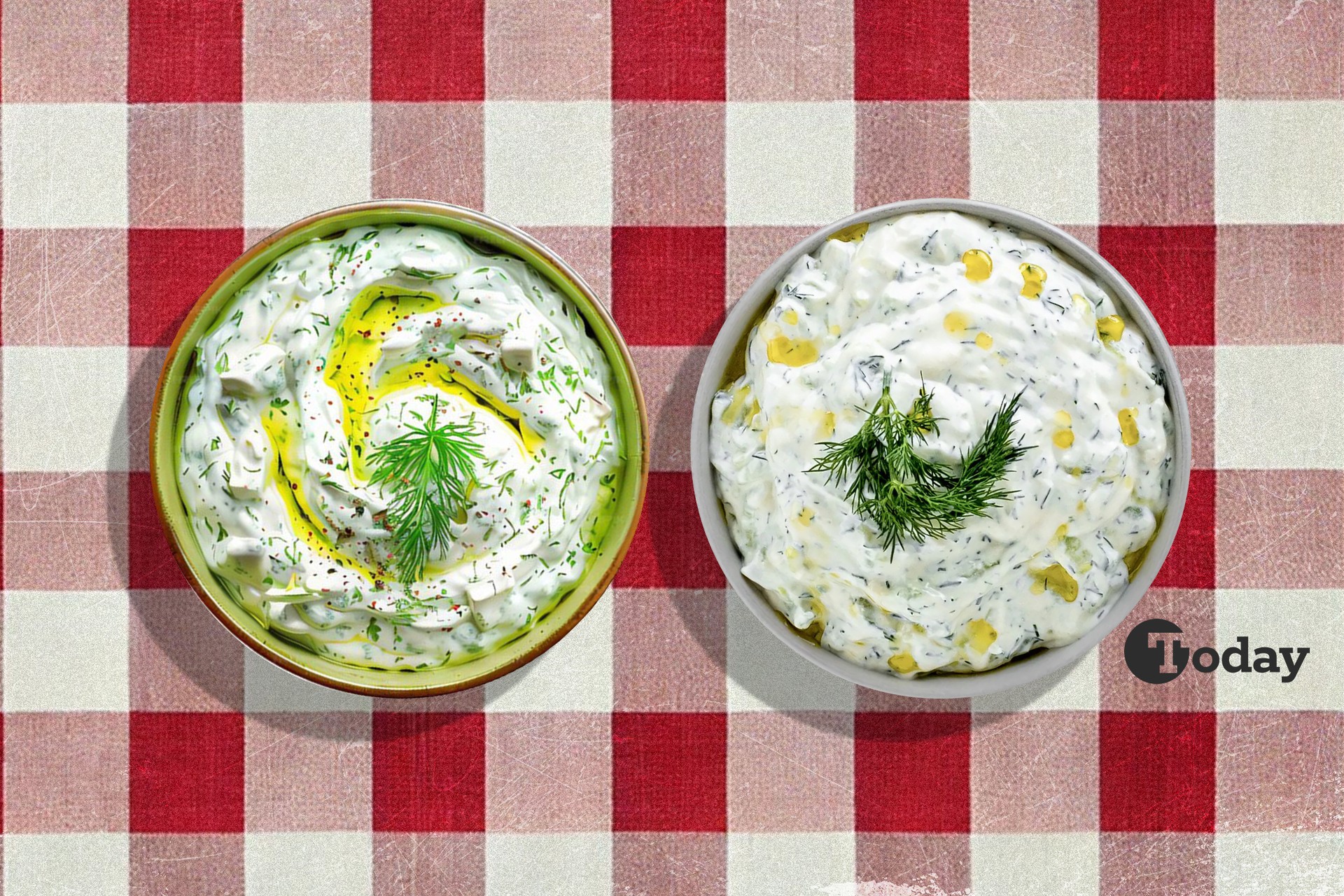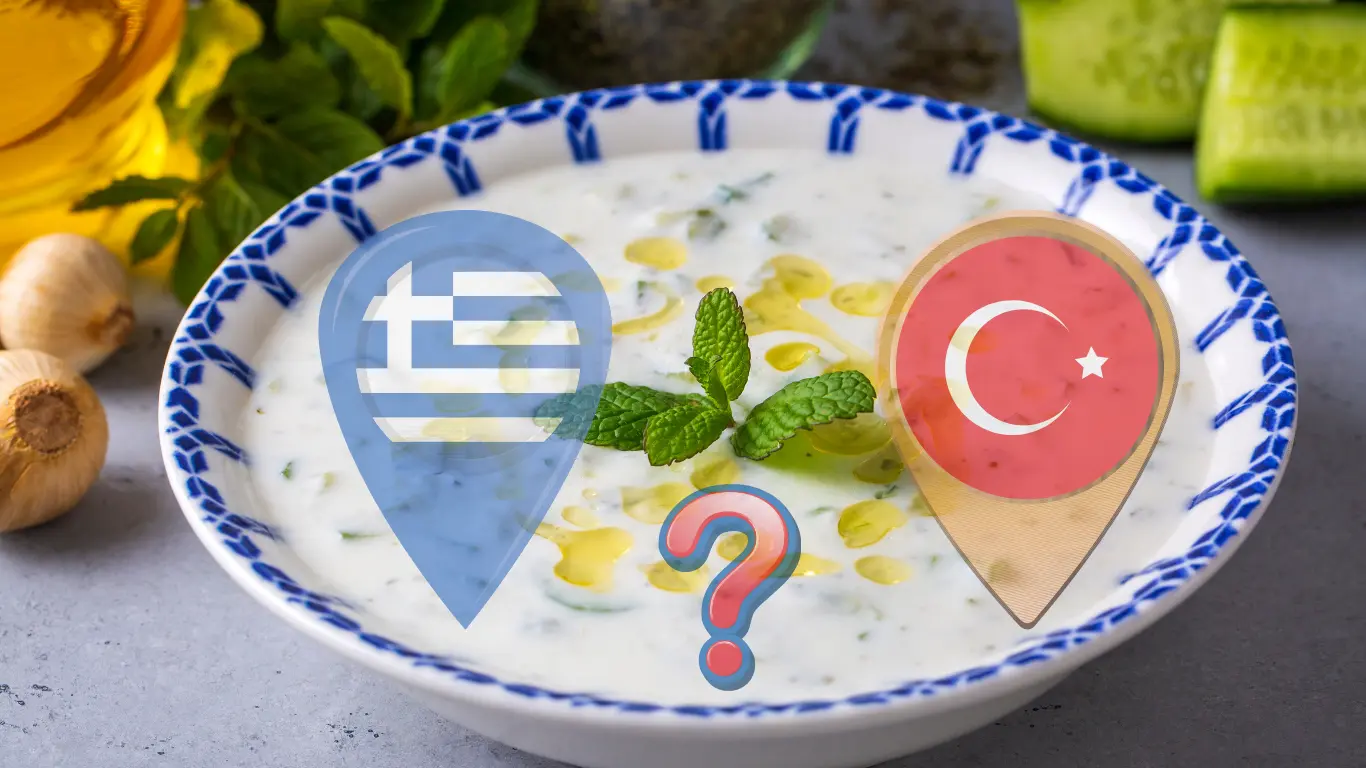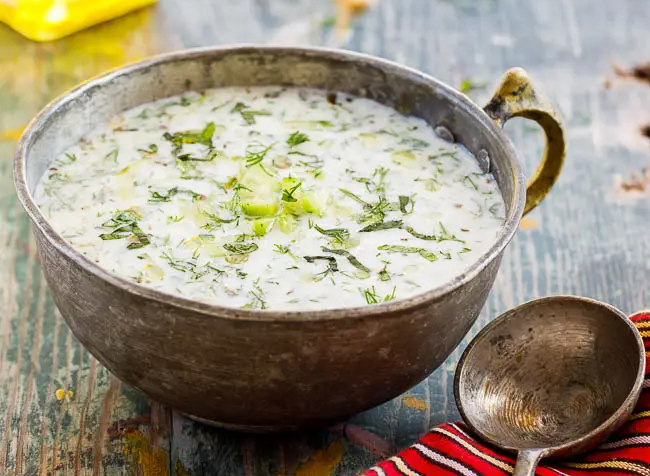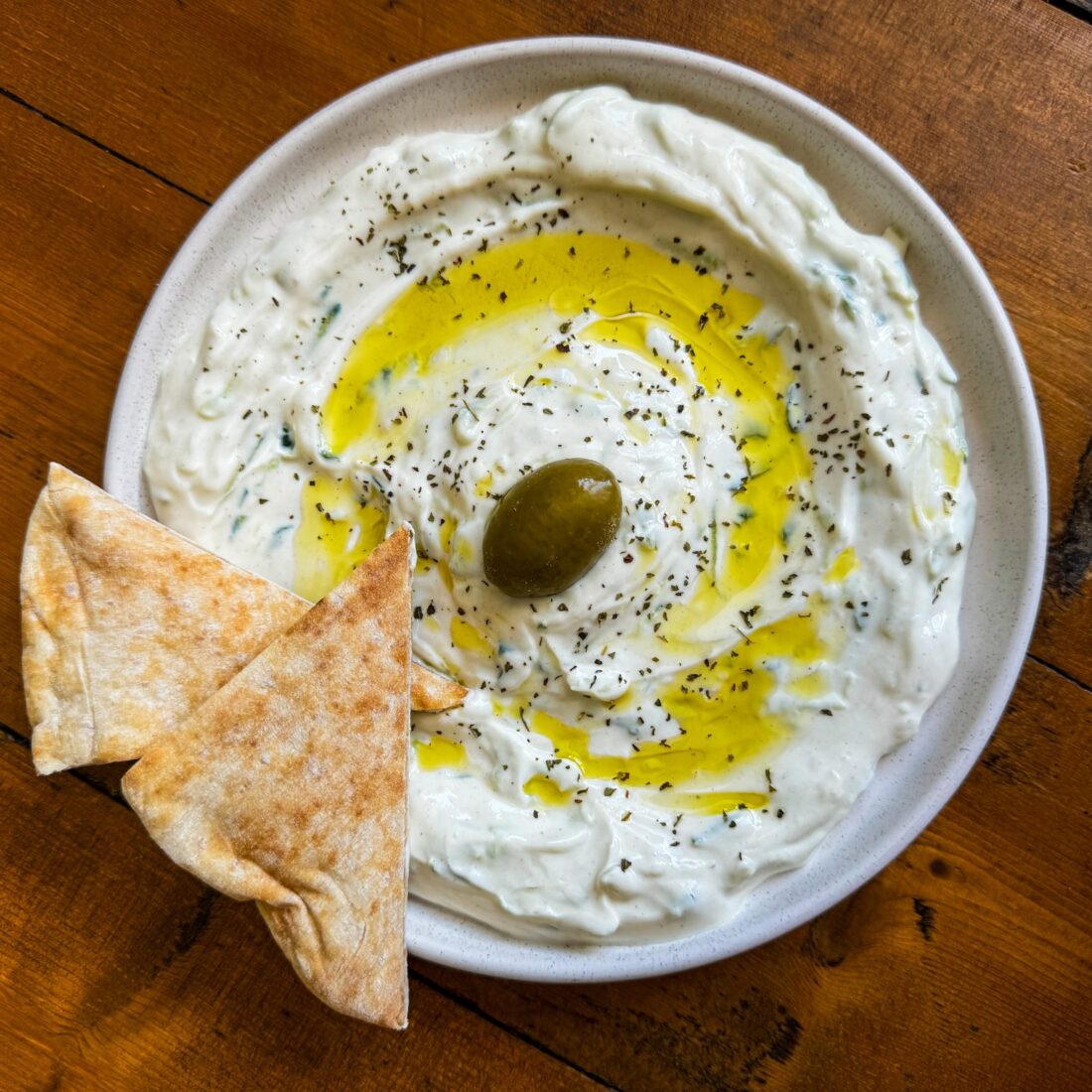
Cacik, a refreshing side dish made with yogurt, cucumber, and spices, holds a cherished place in both Turkish cuisine. Known as “tzatziki” in Greece, this dish is a staple of Mediterranean gastronomy. Despite the similarities, both countries have developed unique variations of this iconic recipe.
But where does this beloved dish originate? Let’s dive into its history and the cultural influences that shaped it.

Although the exact origin of cacik remains unclear, yogurt’s history traces back to Central Asia. Early Turkish nomads introduced yogurt to Anatolia during their migrations, integrating it into local cuisines. Over time, yogurt-based dishes evolved in the region, becoming an essential component of Mediterranean and Middle Eastern diets.
The Greek adoption of yogurt and similar dishes dates back to the Byzantine era. Over centuries, these culinary traditions evolved, resulting in distinct yet comparable dishes like Türkiye’s cacik and Greece’s tzatziki. Both dishes reflect a rich cultural exchange, rooted in the Mediterranean's diverse culinary heritage.

In Türkiye, cacik is typically prepared by mixing yogurt with grated cucumber, garlic, and spices like dried mint. Depending on regional preferences, the dish can vary in consistency. In many areas, water is added to create a lighter, soup-like texture, making it a refreshing accompaniment to summer meals.
For garnish:
Cacik is often served alongside main dishes or as part of a meze spread. Its cooling properties and versatile flavor make it a popular choice during Türkiye’s hot summer months.

Greek tzatziki is renowned for its thick and creamy texture, a result of using strained yogurt. Unlike Türkiye’s more fluid cacik, tzatziki omits water, focusing on the rich consistency of its yogurt base. The dish incorporates grated and drained cucumber, garlic, olive oil, and a splash of vinegar or lemon juice.
In Greece, tzatziki is a popular accompaniment to grilled meats, particularly souvlaki and gyros. It’s also commonly enjoyed with pita bread as a flavorful dip.
Despite their differences, cacik and tzatziki are culinary symbols of Mediterranean unity, showcasing the shared yet distinct food cultures of Türkiye and Greece. Both nations have embraced this yogurt-based delight, adapting it to their tastes while celebrating its refreshing and nourishing qualities.
The story of cacik and tzatziki serves as a reminder of yogurt's true origins in Central Asia, brought to Anatolia by Turkish nomads, and its deep-rooted connection to Turkish culture. Whether enjoyed in Türkiye as a light, soupy mezze or in Greece as a thick, creamy dip, cacik remains a beloved culinary treasure, rich in history and flavor.